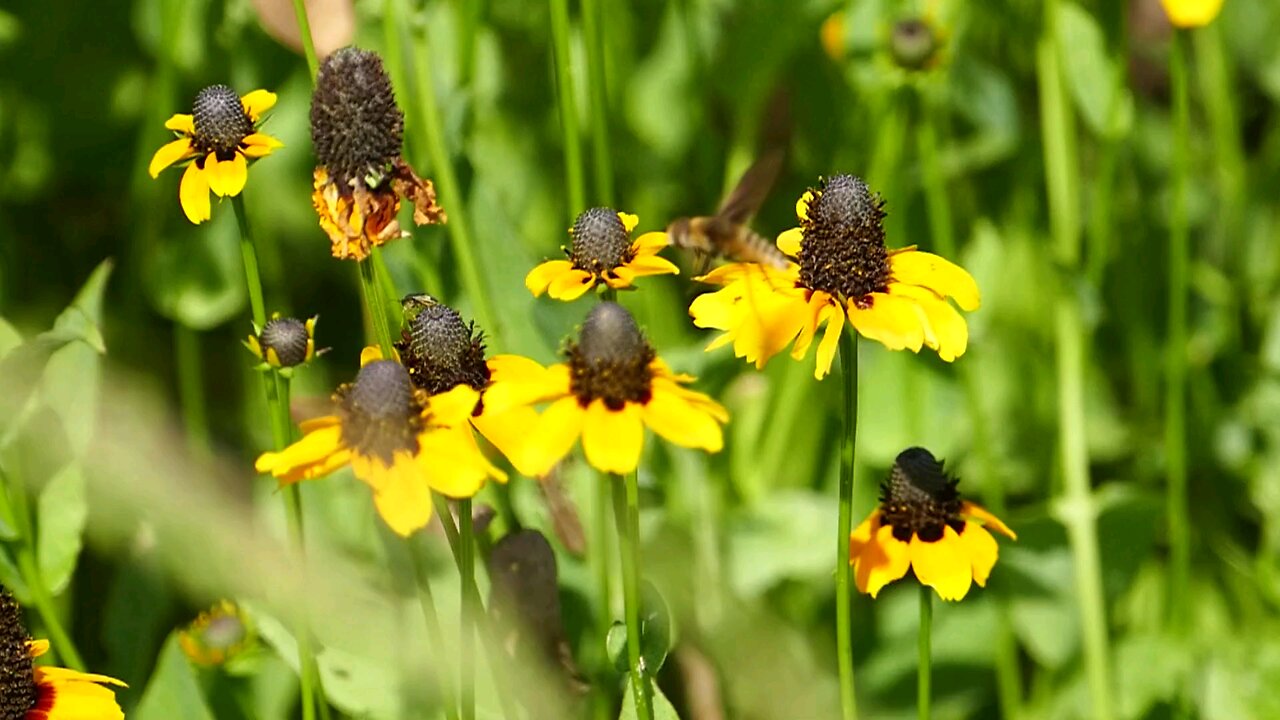Premium Only Content

"Clasping Coneflower: A Hardy Flower for Pollinators"
The clasping coneflower, scientifically known as Rudbeckia amplexicaulis, is a perennial flowering plant that belongs to the Asteraceae family. It is native to the central and eastern regions of the United States, thriving in a variety of habitats. Here’s an overview of the clasping coneflower:
Description:
Appearance: The clasping coneflower typically grows to a height of about 1 to 3 feet (30 to 90 cm). It features distinctive yellow daisy-like flowers with a central brown or black cone, giving it the classic "cone flower" appearance.
Leaves: The leaves are lance-shaped and clasp the stem, which is characteristic of the species. They are dark green and can be somewhat hairy.
Blooming Season: The flowers bloom from mid-summer to early fall, usually from July to September, providing a vibrant display during this period.
Habitat and Distribution:
Rudbeckia amplexicaulis is commonly found in prairies, open woods, and along roadsides. It prefers well-drained soils and can tolerate a range of conditions, including drought.
This species is native to a variety of states, particularly in the Midwest and the eastern United States, where it is often a part of the natural flora.
Cultivation:
Clasping coneflower is favored for its ornamental value and is often used in wildflower gardens, meadows, and naturalized areas.
It thrives in full sun but can also tolerate partial shade. It is relatively low-maintenance and can be grown in average to poor soil conditions.
Deadheading spent flowers can promote extended blooming, and the plant is generally resistant to deer and pests.
Ecological Importance:
The clasping coneflower is beneficial for pollinators, attracting bees, butterflies, and other insects. It serves as a food source for these species and helps support local ecosystems.
Uses:
In addition to its ornamental use, the clasping coneflower can be part of restoration projects, helping to reestablish native plant communities.
It may also have traditional medicinal uses, although it is not as commonly noted for medicinal properties compared to other species in the Rudbeckia genus.
Conclusion:
Rudbeckia amplexicaulis, or clasping coneflower, is an attractive and hardy plant that brings bright color and ecological benefits to gardens and natural landscapes. Its resilience and appeal make it a popular choice among gardeners and conservationists alike.
-
 24:41
24:41
marcushouse
14 hours ago $0.55 earnedStarship’s Final Moment Before Everything Changes! 🚀
3435 -
 UPCOMING
UPCOMING
BlackDiamondGunsandGear
3 hours agoAFTER HOURS ARMORY / EDC / Daily / Truck / SHTF
1061 -
 LIVE
LIVE
Tundra Tactical
2 hours ago $0.58 earnedCZ/Colt Canada Destroys Privately Owned Firearms After Canada Gun Ban
167 watching -
 58:02
58:02
ChopstickTravel
1 month ago $1.86 earnedBillionaire Food in Dubai 🇦🇪 Super Luxury MICHELIN +WAGYU + CAVIAR in UAE!
29.6K2 -
 UPCOMING
UPCOMING
DLDAfterDark
2 hours agoWhat Are The Best Tools For Personal, Home, and Vehicle Defense? After Hours Armory
29 -
 2:58
2:58
From Zero → Viral with AI
19 hours agoAI Isn’t Ruining Politics — It’s Revealing the Truth.
21 -
 LIVE
LIVE
MattMorseTV
3 hours ago $37.34 earned🔴Portland Antifa's LASER ATTACK.🔴
4,361 watching -
 LIVE
LIVE
megimu32
2 hours agoOFF THE SUBJECT: SAVAGE SATURDAY | Bodycam Chaos & Fortnite Madness!
189 watching -
 DVR
DVR
Mally_Mouse
23 hours ago🌶️ 🥵Spicy BITE Saturday!! 🥵🌶️- Let's Play: Content Warning
24.7K2 -
 18:17
18:17
JohnXSantos
1 day ago $0.05 earned$1 vs $1,000,000,000 Business!
2.15K